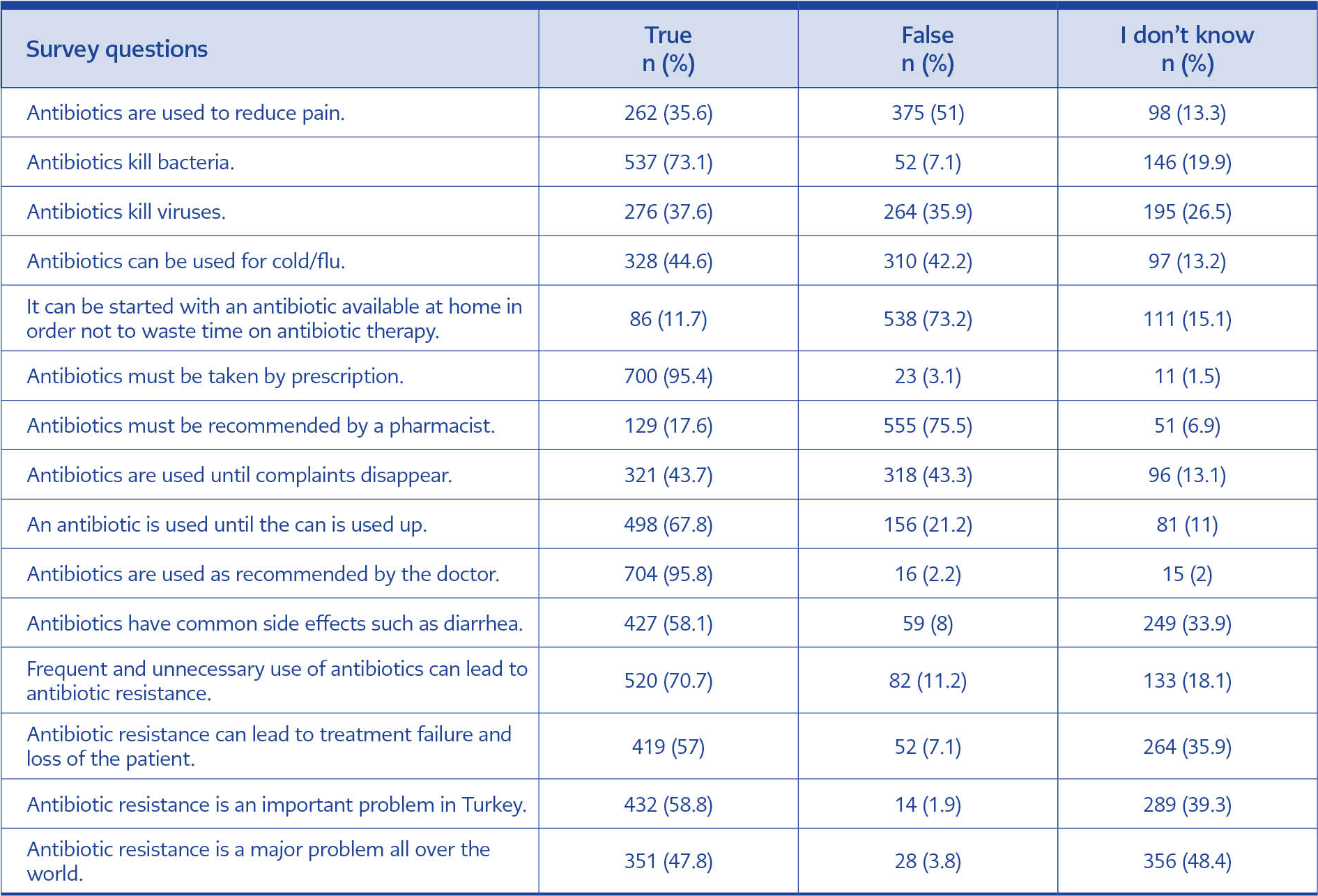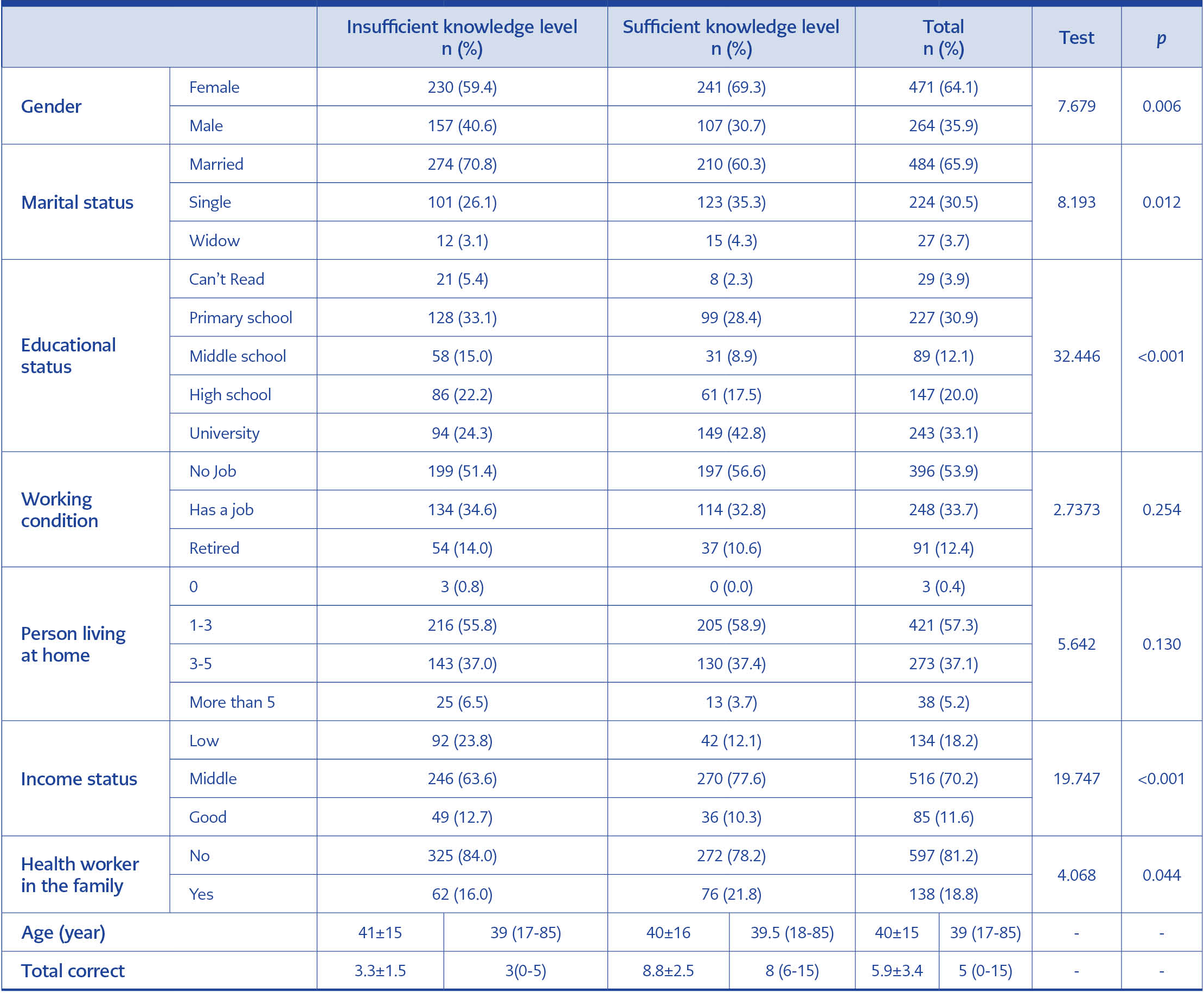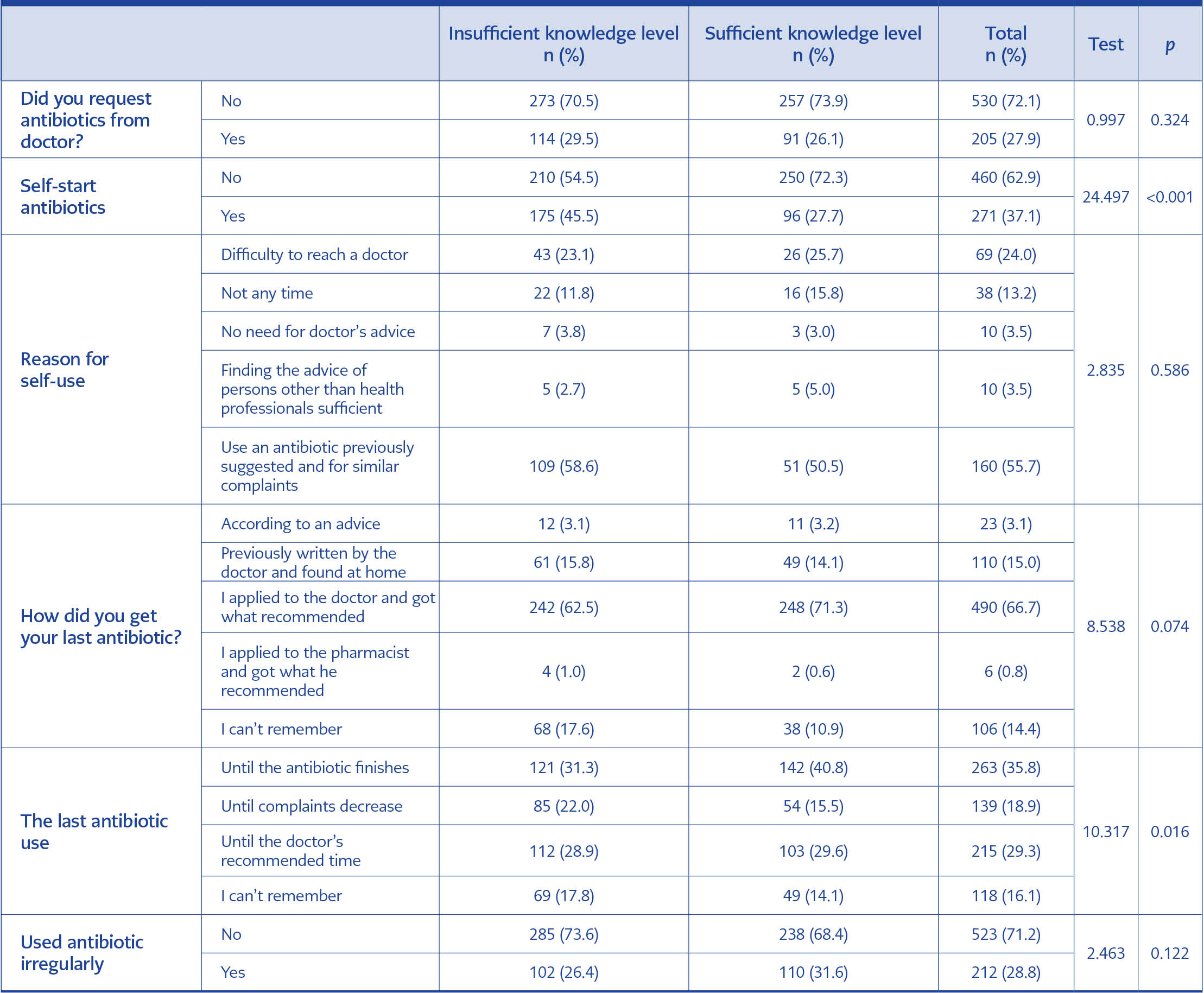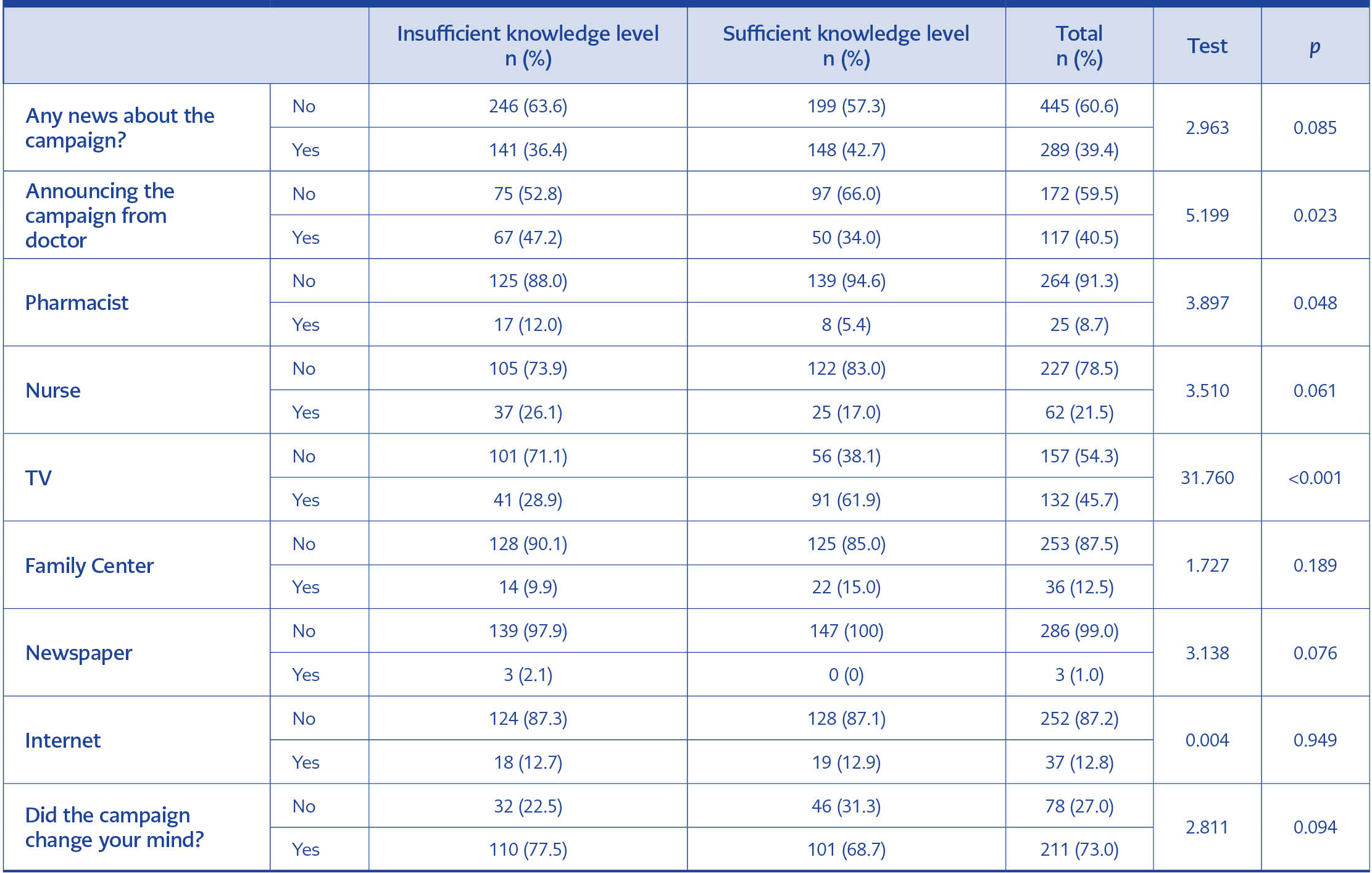Introduction
Antimicrobial resistance can lead to morbidity and mortality in serious infections. Therefore, antimicrobial resistance has been accepted as a global public health problem in the 21st century (1). Unnecessary and excessive use of drugs is a serious problem in our country as well as in the rest of the world (2, 3). Unnecessarily used drugs play an important role in the health expenditures of countries and cause waste of resources, besides causing antimicrobial resistance (4). The knowledge of prescribers, as well as the perceptions of the public about conditions requiring antibiotic treatment and compliance with treatment, play a significant role in controlling antibiotic use and monitoring resistance (5-7). Therefore, most strategies for monitoring antimicrobial resistance, such as guidelines, policies, and educational programs, have focused on both prescribers and the public to promote rational antibiotic use (1).
Few studies have been conducted in Turkey to evaluate antibiotic use, knowledge, and attitudes of the public (4, 8). Rational use of antibiotics can be successfully implemented with the participation of the public and health practitioners. Evaluating the knowledge and attitudes of the public about antibiotic use can reveal the factors that cause inappropriate antibiotic use. Strategies developed based on the results may contribute to appropriate antibiotic use. Therefore, this study aimed to evaluate the knowledge and attitudes of patients admitted to the outpatient clinics of our hospital regarding the rational use of antibiotics.
Materials and Methods
Patients who applied to Infection Diseases and Internal Diseases Polyclinics between August 01, 2021, and February 01, 2022, were included in the study. After obtaining written consent from those who agreed to participate in the study, a face-to-face questionnaire was applied to evaluate their knowledge and attitudes about antibiotic use. The first part of the questionnaire consisted of 11 questions about the demographic data; the second part consisted of 15 questions to measure their knowledge about antibiotics.
The median of the total correct score on the scale measuring the patients’ knowledge level was 5. It was determined that individuals who scored 5 or less did not have sufficient knowledge, and those who scored above 5 had sufficient knowledge. Questionnaires in previous similar studies were applied while preparing the questions (9-12). A pre-test was done to test the comprehension and readability of the questionnaire. The Ethics Committee of Kütahya Health Sciences University approved the study on February 25, 2020, with decision number 2020/04-16.
The statistical analyses were performed using the Statistical Package for Social Sciences (SPSS) 23.0 (IBM Corp., Armonk, NY, USA). While the mean, standard deviation, median, and minimum-maximum were presented for continuous quantitative variables, categorical variables were interpreted according to frequencies and percentages. A Chi-square analysis was done to detect the differences between the groups. Mann Whiney-U test was performed for the variables that did not meet the normal distribution and scatter conditions. The statistical significance was set as p<0.05.
Results
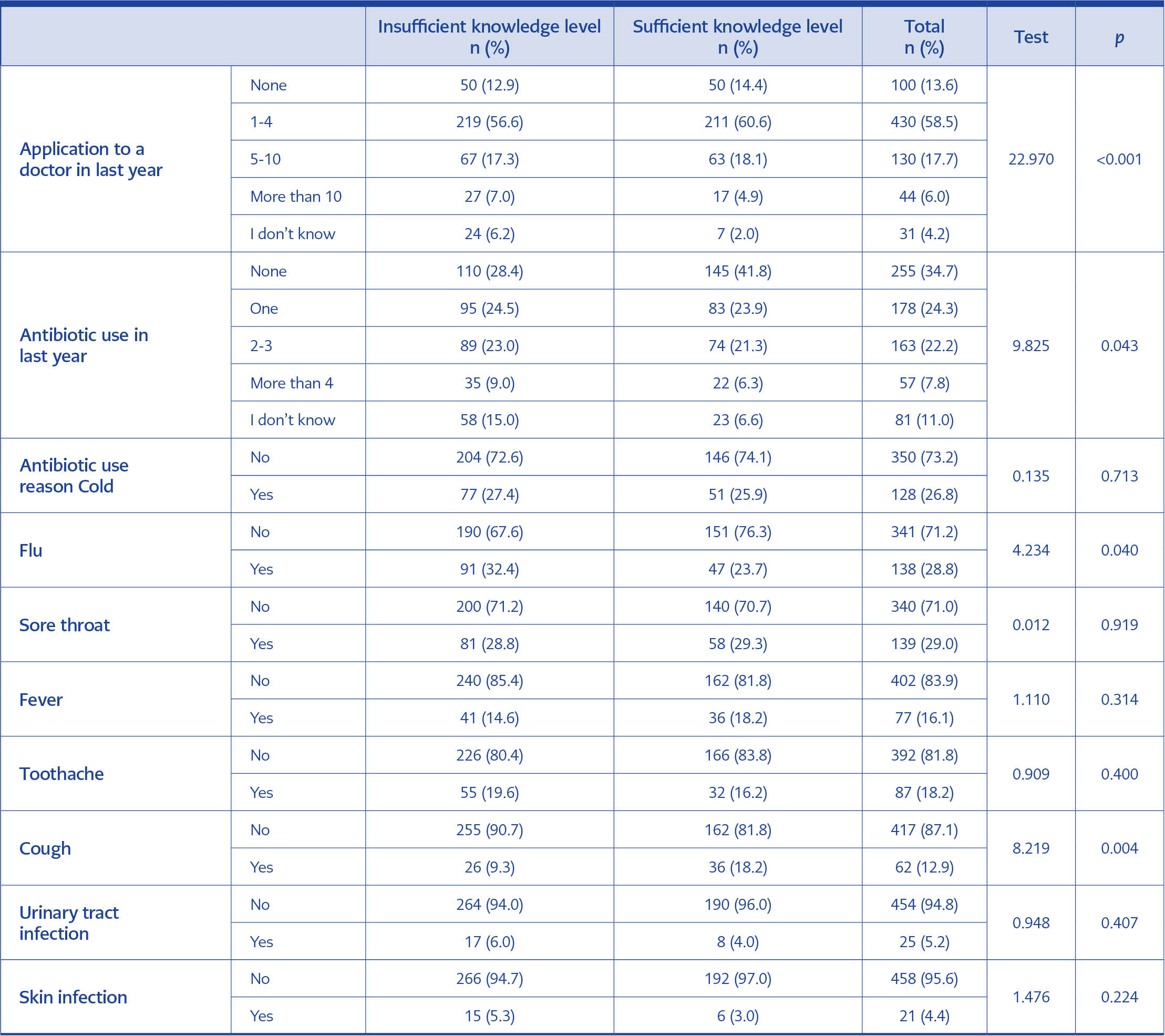
Table 3. Distribution of the reasons for antibiotic use in the last one year according to the level of knowledge of the patients participating in the study.
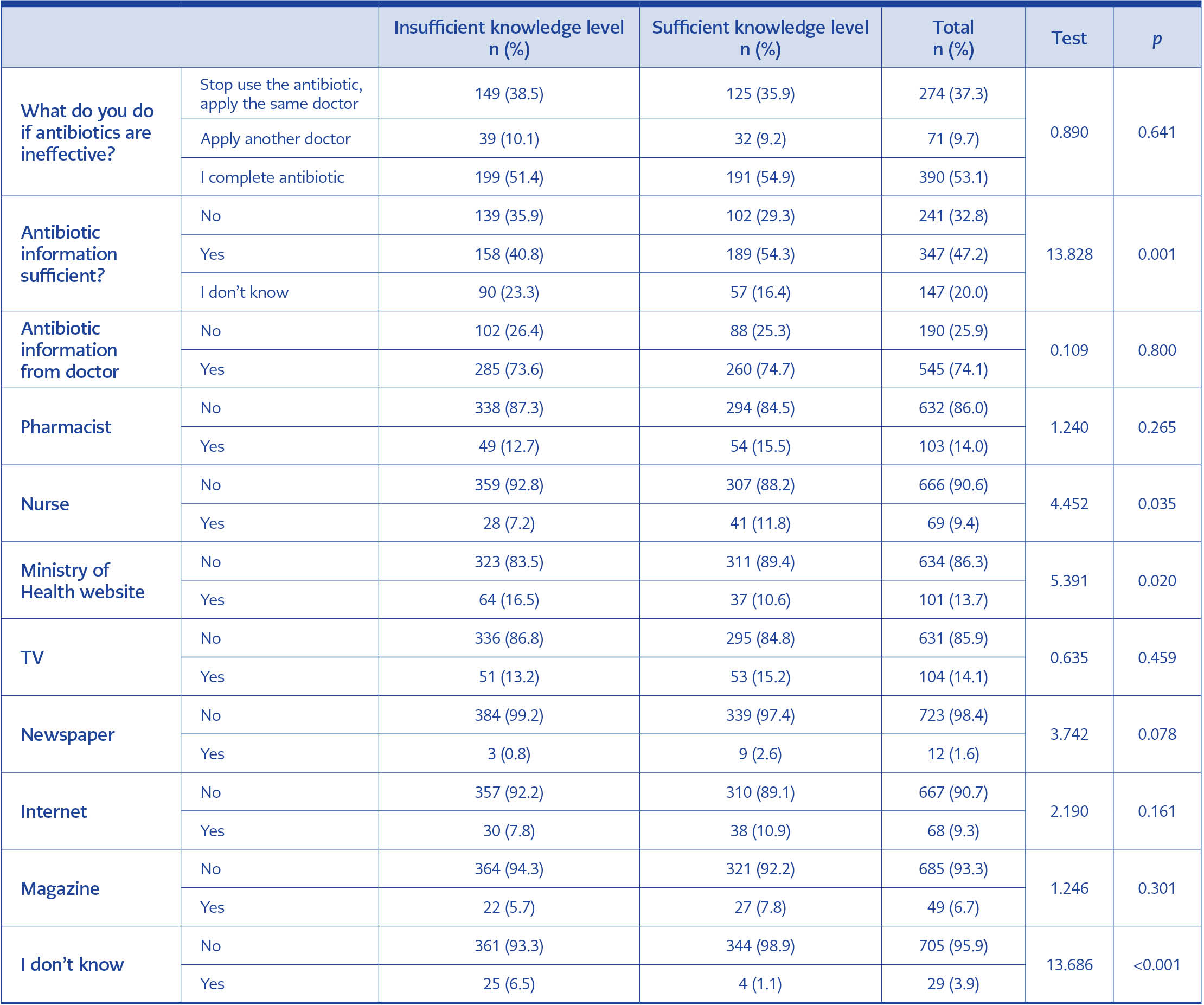
Table 5. Distribution of sources of obtaining antibiotic information according to the knowledge levels of the individuals participating in the research.
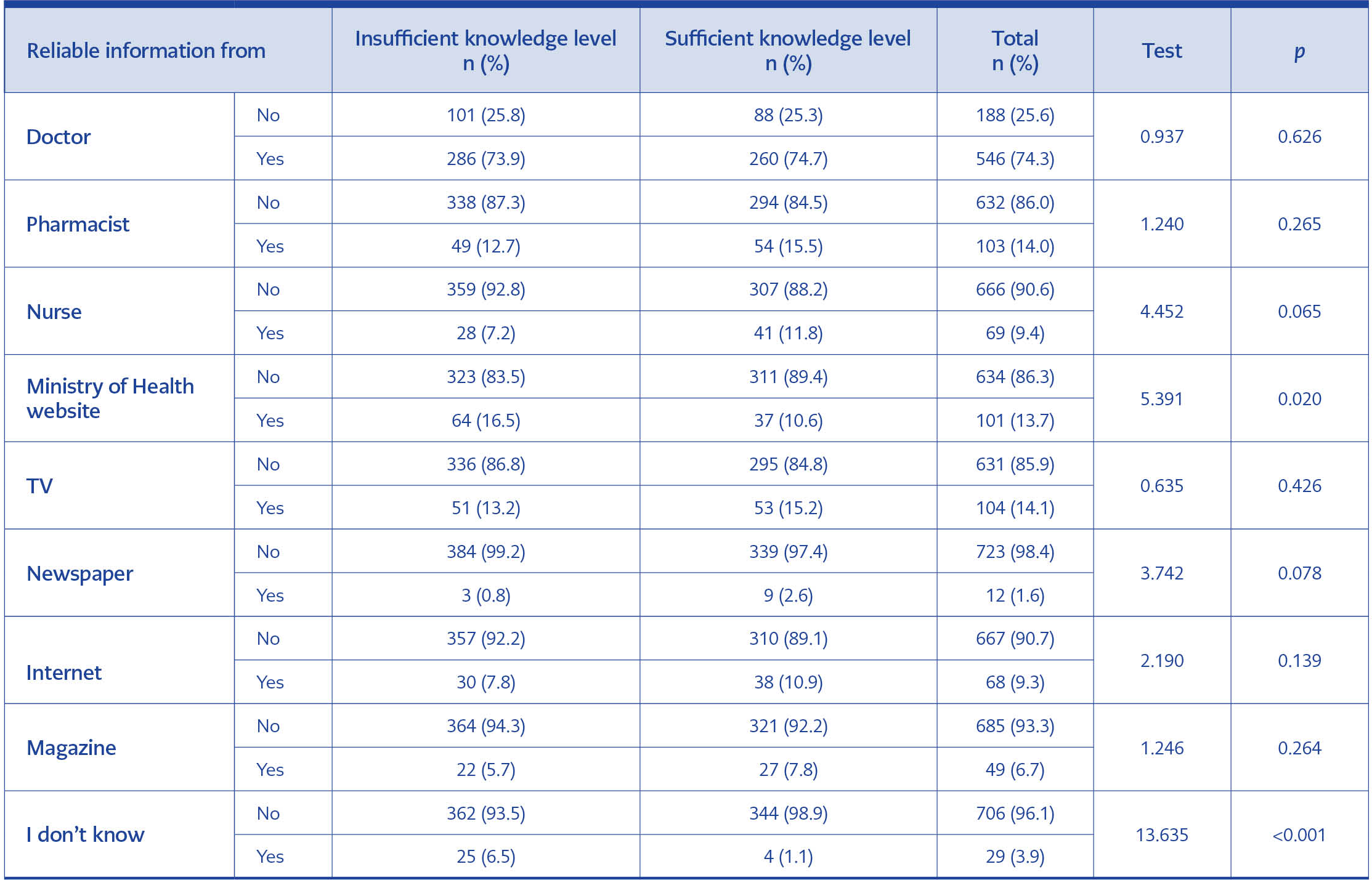
Table 6. Distribution of sources that they think will provide reliable information on antibiotic use according to the level of knowledge of the individuals participating in the research.
A total of 735 patients were included in the study, and their demographic details were as follows: 64.1% were female; the mean age was 40±15 years; 65.9% were married; 33.1% were university graduates, and 30.9% were primary school graduates; 52.9% were not employed; 57.3% lived with one to other three people; 70.2% were middle-income. The patient’s answers to questions about their knowledge of antibiotic use are presented in Table 1. The distribution of the epidemiological characteristics by knowledge level is presented in Table 2. Female gender, being single, being a university graduate, and having a middle income were associated with a sufficient knowledge level (p<0.05).
A total of 58.5% of the patients participating in the study had consulted a doctor between one and four times in the previous year. While 34.7% did not use antibiotics in the previous year, 24.3% used antibiotics once, and 22.2% two to three times. The most common reasons for using antibiotics were sore throat (29%), flu (28.8%), and colds (26.8%). The group with insufficient knowledge visited a doctor ten or more times during the previous year (p<0.001). The knowledge of those who did not use antibiotics the year before was observed to be better than that of those who used antibiotics two to three times or more than four times (p=0.043). Likewise, those with insufficient knowledge used statistically significantly more antibiotics in cases of influenza infection (p=0.040) and coughing (p=0.004) compared to the group with sufficient knowledge. The distribution of the reasons for antibiotic use in the previous year according to knowledge level is presented in Table 3.
A total of 72.1% of the patients stated that they did not request antibiotics from their doctor, and 62.9% stated that they did not start antibiotics on their own. Using previously recommended and “good” antibiotics for similar complaints was the most common reason for self-starting antibiotics (55.7%). While 66.7% reported taking the most recent antibiotic on a doctor’s prescription, 35.8% reported using it until the package ran out. Even if they believed the antibiotic was ineffective, 53.1% of the patients completed the prescription period; only 37.3% said they stopped using it and went to the doctor control. A total of 71.2% of the patients stated that they did not use antibiotics irregularly. The rates of self-starting (p<0.001) and using antibiotics until the complaints subsided (p<0.016) were higher in the group with insufficient knowledge. The characteristics of antibiotic use according to the patient’s knowledge level are presented in Table 4.
While 47.2% of the patients thought their knowledge about antibiotics was sufficient, 32.8% thought it was insufficient. The most important source of information about the use of antibiotics was doctors for 74.1%. The rate of getting information from nurses was statistically significantly higher for those with a high knowledge level (p=0.035). The distribution of sources according to the knowledge levels of patients is presented in Table 5. A total of 74.3% thought doctors were the most reliable source of information about antibiotic use. Table 6 presents the distribution of sources from which patients believe they can obtain reliable information on the use of antibiotics.
Only 39.4% of the patients stated that they were aware of the campaign on rational use of antibiotics. Patients’ most common sources of news about the campaign regarding the rational use of antibiotics were television (45.7%), doctors (40.5%), and nurses (21.5%). A total of 73% of patients stated that their opinion about the use of antibiotics had changed after they heard about the campaign. Patients’ sources of information about the rational use of antibiotics are presented in Table 7.
Discussion
Our study evaluated the knowledge and attitudes of patients who applied to the infection and internal medicine outpatient clinics about the rational use of antibiotics. Only 35.6% said antibiotics could be used to reduce pain, 37.6% said antibiotics were effective against viruses, and 44.6% stated that antibiotics could be used for a cold or flu infection. Similarly, in a study conducted in Serbia, 20% of the participants said that antibiotics could be used as pain relievers, 58.4% stated that they could be used for colds, and 16.8% started the use of antibiotics at home in order not to waste time (1). In another study, 35% of the participants stated that viral infections could effectively be treated with antibiotics, 15% said that antibiotics could be used for colds or influenza, and 52% stated that common colds got better with antibiotics (13). In a study by Lim et al., 45.6% of the participants said antibiotics could be used to treat viral infections, and 46.4% stated that antibiotics could be used to treat colds and influenza (14). In another study conducted in Romania, 52.3% of the participants stated that antibiotics could be used to treat pain and inflammation, and 37.5% said antibiotics could be used to treat viral infections (15).
Studies have shown that viral infections, especially colds and flu, are among the most common reasons for the self-use of antibiotics (1, 4, 8, 11). In our study, the most common reasons for the self-use of antibiotics were sore throat (29%), influenza infection (28.8%), and the common cold (26.8%). Based on the data we obtained, the fact that the majority of our patients believed that antibiotics would cure viral infections and that the most common reason for the self-use of antibiotics was upper respiratory tract infection indicates that the use of antibiotics for upper respiratory tract infections is one of the main targets for the development of appropriate antibiotics use.
In our study, 73.3% of the patients believed it was right to self-start using antibiotics, not to waste time, but only 37% stated that they had self-started. Using previously recommended and “good” antibiotics for similar complaints was the most common reason for self-starting antibiotics (55.7%). In a study conducted in Türkiye, the rate of self-initiation of antibiotics was 52%, and patients stated that they used antibiotics given for similar complaints most frequently. When patients who self-initiated antibiotics were evaluated in this study, it was seen that the antibiotics that were previously prescribed and were good for them were most frequently used; however, the issue of whether they asked the physician to prescribe the same drug again was not included. It was observed that antibiotics left at home are also an important source for patients who self-initiate antibiotics. (4). In other studies, the rates of self-use of antibiotics varied between 27% and 63.7% (1, 8, 11, 13). Self-use may be related to the rate of inappropriate use. Leftover antibiotics from the previous inappropriate antibiotic treatment can be a source of subsequent inappropriate use. In our study, 20% of the patients stated that they could not remember the duration of the antibiotic use, and %16 used it until the complaint had passed. Using antibiotics in inappropriate dosages, as well as using them for an inappropriate duration, are among the factors that prevent rational use of antibiotics. In studies, the rate of patients who discontinue antibiotics when symptoms disappear instead of completing the course recommended by the doctor varies between 4% and 43% (1, 4, 15, 16).
A total of 58.8% of patients believed that awareness of antibiotic resistance is important in Türkiye. Moreover, the rates of patients who believe that frequent and unnecessary use will cause antibiotic resistance and who associate this with treatment failure are 70% and 57%, respectively. In studies conducted in Türkiye, the rate of awareness of the rational use of antibiotics was reported to be 8.2%, and the rate of having heard about antibiotic resistance was 32.5% (4, 8). Studies indicated that 38% to 69% of the public was aware of antibiotic resistance (14, 16-18). In a study by Lim et al., the rate of participants who believed that antibiotic resistance would cause treatment failure in severe infections was 7% (14).
In our study, 39.4% of the patients stated that they were aware of the campaign about the rational use of antibiotics. Patients’ most common news source about the campaign for the rational use of antibiotics was television (45.7%), and the second-most common source was doctors (40.5%). At 73% of patients stated that their opinion about the use of antibiotics had changed after they heard about the campaign. The studies reported that the internet and television were the most frequently used sources for rational use of antibiotics campaign in Türkiye (4, 8).
One of the critical steps to be taken to improve the appropriate use of antibiotics is to reduce the pressure on physicians to prescribe antibiotics. A study conducted in England found that 38% of the public asked physicians to prescribe antibiotics (13). In a study conducted in France, 39% of physicians stated that their patients frequently asked them to prescribe antibiotics (18). In our study, this rate was 28%.
Our study evaluated the relationship between the level of knowledge about antibiotics and the use of patients and found that the female gender, being single, being a university graduate, and having a middle income, was associated with sufficient knowledge. It was observed that as the level of knowledge increased, the rate of antibiotic use for a cold or flu infection decreased, and the rate of use of antibiotics for the recommended duration also increased. All these data suggest that appropriate antibiotic use can be successfully implemented by improving patients’ knowledge. The fact that doctors are regarded as the most reliable source (74%) for patients regarding antibiotics-related information indicates that doctors need to persuade their patients to use antibiotics appropriately despite patients’ demands to be prescribed antibiotics. Similar to our country, in Italy, 80% of the information about antibiotics was obtained from doctors; two-thirds of patients stated that more information about antibiotics was beneficial. Self-use of antibiotics was found to be associated with doctors’ failure to provide information about antibiotics at the previous visit (11). In England, 43% of patients stated that their physicians did not inform them about antibiotics (13).
A different and important point in our study was that when patients with sufficient knowledge were compared with patients who did not have sufficient knowledge, obtaining information from nurses resulted in a statistically significant difference in having sufficient knowledge. This is especially important because nurses are the ones who can spend more time with patients when doctors cannot spare enough time for the patient because of busy working conditions. The preparation of guides and training programs to increase nurses’ knowledge about antibiotic use policies may help with appropriate antibiotic use.
A study from Serbia, which associated the level of knowledge with higher education and having a health worker in the family, found that as the level of knowledge increased, the number of requests for antibiotics to doctors and the rate of self-starting antibiotics decreased (1). Another study found that being informed by a doctor, being a university graduate, and knowing that antibiotics can have side effects were associated with appropriate antibiotic use (4). In addition, Lim et al. reported that as patients’ knowledge level increased, the demand for antibiotics from doctors decreased; the level of knowledge was associated with male gender and being a university graduate (14).
In conclusion, the knowledge level of our patients regarding antibiotics provided better results in all parameters, such as the number of visits to the doctor, self-starting antibiotics, using the antibiotic in the appropriate indication, and complying with the duration, and was associated with appropriate antibiotic use. Moreover, the fact that physicians were the most reliable knowledge source for antibiotic use indicates that physicians play an essential role in informing patients. Physicians and television are important for successfully implementing the campaign for the rational use of antibiotics in our country and reaching a broad target audience. Therefore, reaching a broad target audience may help improve knowledge and change attitudes about antibiotic use.
